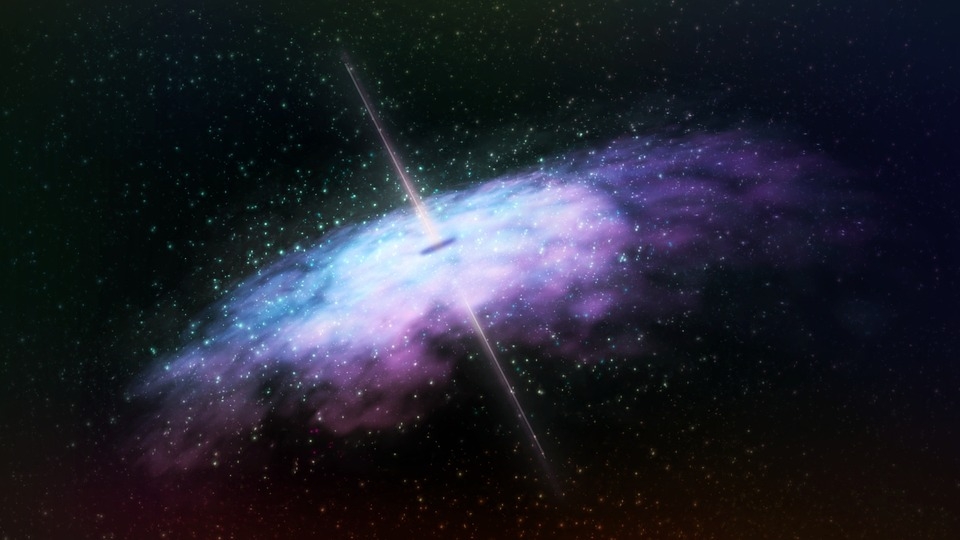Despite being known as a black hole, this space object still manages to catch the attention of astronomers because of the extremely bright light it produces. Recently, astronomers were able to witness for the first time, a flare coming from merging black holes.
According to a recent study in 2019, two black holes were found merging in the deep regions of space, and with their merging came an extremely bright flare-up, the beam of light visible through the universe. This research is especially significant, knowing that black holes, as its name implies, do not have light. It should be noted that when black holes merge into one, they create a ripple in spacetime which is also referred to as a gravitational wave.
This discovery was made by researchers from the National Science Foundation Laser Interferometer Gravitational-wave Observatory. According to Matthew Graham of the California Institute of Technology Zwicky Transient Facility, the flare-up most likely originated from the merging of two supermassive black holes. However, more research appears to be needed before coming to the definitive explanation.
“The supermassive black hole was burbling along for years before this more abrupt flare. The flare occurred on the night timescale, and in the right location, to be coincident with the gravitational-wave event,” said Graham.
Dr. Nicholas Ross of the University of Edinburg expressed excitement at the discovery. Dr. Ross explained that the merging of black holes would have tremendous implications in the field of physics.
Previously, astronomers found what appears to be an extremely massive quasar, referred to as J1007+2115 also known as Pōniuāʻena, which translates to “unseen spinning source of creation, surrounded with brilliance.” This quasar was detected by astronomers at Maunakea in Hawaii, its name coming from the suggestions of 30 Hawaiian teachers. Astronomers were searching for the most distant quasars in space when they came across this one.
This particular quasar is so far the most distant or earliest celestial object to contain a black hole with the mass of over a billion suns. This quasar is so distant that it took 13.02 billion years just to be able to get to Earth, which suggests it started its journey 700 years following the Big Bang.



 Tatahouine: 'Star Wars meteorite' sheds light on the early Solar System
Tatahouine: 'Star Wars meteorite' sheds light on the early Solar System  Spacesuits need a major upgrade for the next phase of exploration
Spacesuits need a major upgrade for the next phase of exploration  Could a telescope ever see the beginning of time? An astronomer explains
Could a telescope ever see the beginning of time? An astronomer explains  Customizing mRNA is easy, and that's what makes it the next frontier for personalized medicine − a molecular biologist explains
Customizing mRNA is easy, and that's what makes it the next frontier for personalized medicine − a molecular biologist explains  Archeoastronomy uses the rare times and places of previous total solar eclipses to help us measure history
Archeoastronomy uses the rare times and places of previous total solar eclipses to help us measure history  Why some people don't trust science – and how to change their minds
Why some people don't trust science – and how to change their minds  Black hole, neutron star or something new? We discovered an object that defies explanation
Black hole, neutron star or something new? We discovered an object that defies explanation  The mystery of consciousness shows there may be a limit to what science alone can achieve
The mystery of consciousness shows there may be a limit to what science alone can achieve  Our survey of the sky is uncovering the secrets of how planets are born
Our survey of the sky is uncovering the secrets of how planets are born  The brightest object in the universe is a black hole that eats a star a day
The brightest object in the universe is a black hole that eats a star a day  How do airplanes fly? An aerospace engineer explains the physics of flight
How do airplanes fly? An aerospace engineer explains the physics of flight  Genetic diseases: How scientists are working to make DNA repair (almost) a piece of cake
Genetic diseases: How scientists are working to make DNA repair (almost) a piece of cake  If life exists on Jupiter’s moon Europa, scientists might soon be able to detect it
If life exists on Jupiter’s moon Europa, scientists might soon be able to detect it  Synthetic human embryos let researchers study early development while sidestepping ethical and logistical hurdles
Synthetic human embryos let researchers study early development while sidestepping ethical and logistical hurdles  Orbital resonance − the striking gravitational dance done by planets with aligning orbits
Orbital resonance − the striking gravitational dance done by planets with aligning orbits 





























